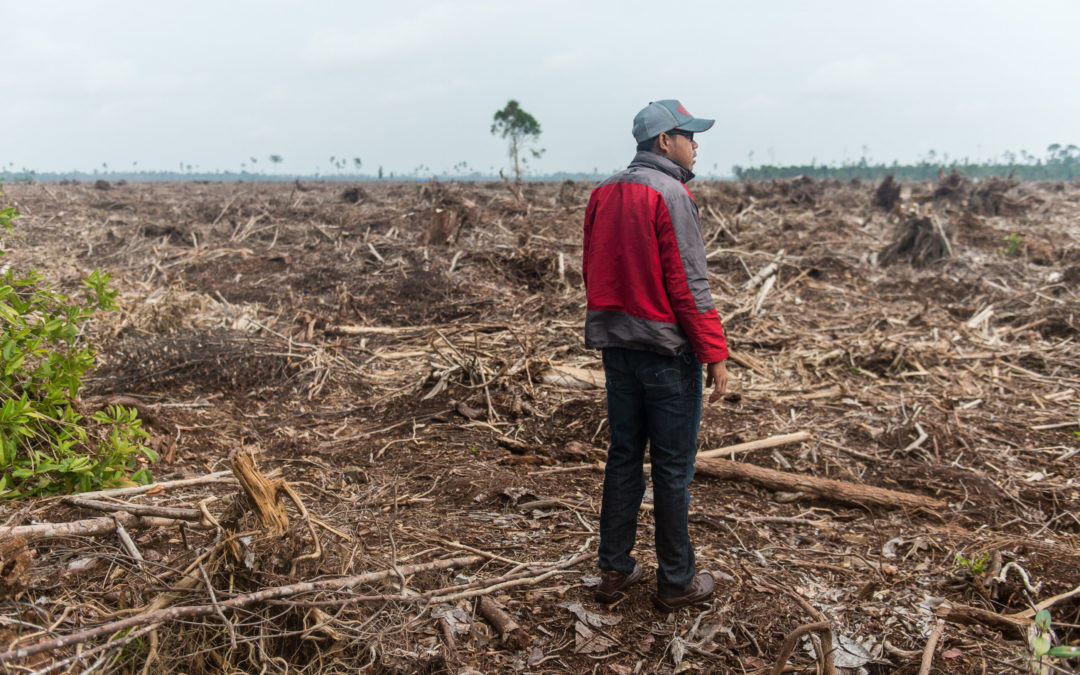
Trees Fell Faster in the Years Since Companies and Governments Promised to Stop Cutting Them Down
SOURCE: Inside Climate News
DATE: May 19, 2021
SNIP: In the seven years since governments and corporations promised to stop deforestation, the clear cutting of critically important tropical forests has instead increased by more than 50 percent, a new report shows, with commercial agriculture driving most of the increase.
The report, released Tuesday by the conservation group Forest Trends, tracks deforestation, legal and illegal, in 23 countries with large areas of tropical forests, including Brazil, home to most of the Amazon rainforest. The research looks at the period, starting in 2014, when dozens of governments, organizations and companies signed onto the New York Declaration on Forests, a voluntary agreement to halve deforestation by 2020 and stop it altogether by 2030.
The researchers found that, since those commitments, an area nearly twice the size of California has been cleared of trees, mostly for commercial agriculture, which is the largest driver of deforestation and the biggest source of greenhouse gas emissions from land use.
“The scale of the increase in deforestation is really huge, and given all the commitments, is really disappointing and shocking,” said Cassie Dummett, one of the report’s lead authors. “Every year so much is being cleared, and when it’s for commodities, that means that the world’s consumers and governments are complicit.”
Two countries, Brazil and Indonesia, suffered most of the forest losses driven by agriculture, the report found. In Brazil, the world’s largest producer and exporter of beef, nearly 95 percent of the conversion of woodlands to agricultural fields was done illegally.
Most of that clearing was driven by a demand for exported commodities. In addition to beef, the biggest culprit throughout Latin America continues to be soy, largely for animal feed and destined for overseas markets, especially China, which has seen a surge in demand for meat. In Indonesia, the largest driver of deforestation continues to be palm oil, which finds its way into a wide array of commercial food and consumer products in markets around the world.
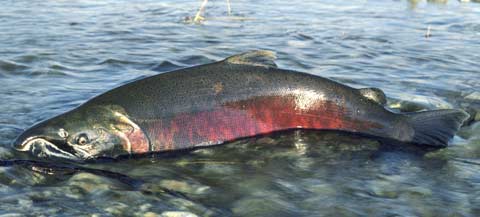
Salmon have shrunk so much that Whole Foods redid its guidelines
SOURCE: Seattle Times
DATE: April 27, 2021
SNIP: At OBI Seafoods, a sprawling operation with outposts throughout Alaska, there’s all sorts of extra machinery for workers to master. At Whole Foods Market, there are new guidelines for purchasing salmon from wholesalers. And at Ivar’s, a fixture on Seattle’s waterfront for eight decades, the chef is sending back skimpy salmon delivered to his kitchen.
Behind all these changes is an alarming trend that’s been building for years: The giant schools of wild Pacific salmon that can turn southeast Alaska’s ice-cold waters into a brilliant orange blur are thinning out, and those that do survive are shrinking in size.
It’s the shrinking part that’s causing the biggest logistical snarl right now. Many salmon are so small they’ve thrown off OBI’s fish-sorting process and no longer meet the purchasing specifications at Whole Foods and culinary demands at Ivar’s. There, head chef Craig Breeden snaps photos of the fish next to his knife to illustrate their diminutive size before shipping them back.
“It’s very irritating when the supplier sends it to me and I see the size of these fillets,” he said. “In the last eight to 10 years, the salmon sizes have started to get smaller and smaller.”
These disruptions are, for now, more a nuisance than serious problem. But they almost certainly presage more costly changes to come and, much more importantly, raise alarm bells about the growing crisis in some key salmon populations that is being driven, according to many scientists, by climate change and more competition for food. Decades after the Atlantic cod fisheries collapsed, concern is now mounting among experts that wild Pacific salmon could face a similar fate.
“The whole thing is out of whack,” said Laurie Weitkamp, a U.S. fisheries biologist at the National Oceanic and Atmospheric Administration. “Salmon managers are realizing that climate change is impacting their stocks and it is generally not favorable and it’s only going to get worse.”
Salmon are so vital that scientists call them a “keystone” species, since animals such as bears and eagles depend on them, and the fish indirectly spread nutrients into ecosystems including forests. A salmon’s life journey from freshwater streams to the ocean and back again to reproduce and die makes them especially vulnerable to warming temperatures and a shifting environment.
Alaskan salmon are getting smaller partly because they’re returning from the ocean at a younger age, though scientists don’t really know why. The trend is also playing out across the Pacific Rim, from the U.S. mainland and Canada to Russia and Japan.
“When the size and the numbers go down that’s a harbinger of change that is taken as a red flag among many scientists,” said Peter Westley, of the University of Alaska Fairbanks, co-author of a study on salmon size published last year with the University of California, Santa Cruz.
The scientists examined four of the five Pacific salmon species in Alaska. Chinook — pursued by anglers and valued by restaurants — had the biggest average decline, at 8%, compared with pre-1990 fish. All other species shrunk, with sockeye showing the smallest decline at 2.1%. The most rapid changes were in the past decade.
Dwindling sizes in other species signaled a fishery’s collapse, including Canada’s Atlantic cod three decades ago.
In Europe and New England, the memory of rivers teeming with wild Atlantic salmon is all but forgotten due to overfishing, habitat loss and dam construction that blocked spawning grounds, said David Montgomery, whose 2003 book “King of Fish: The Thousand-Year Run of Salmon” warns that the Pacific species could face the same fate. “Sadly, the book is still current.”
Agriculture, mining and other man-made interactions have sent Pacific salmon numbers plummeting in places including the Pacific Northwest’s Columbia-Snake River Basin. In some parts of Canada and the U.S., they’re endangered. Key runs in Alaska and Canada’s British Columbia province are seeing some of the worst years.
B.C.’s Fraser River had record low sockeye run sizes in three of the last five years, with last season setting a new low, said the Pacific Salmon Commission, which oversees management of the fish in the U.S. and Canada.
“We are seeing a march north on the declines and collapses of salmon fisheries,” said Guido Rahr, head of Portland-based Wild Salmon Center. “Japan has almost no wild fish left. In parts of Russia, once massive salmon runs are collapsing due to overfishing.”
Russia and the U.S. make up 85% of the world’s remaining Pacific salmon.
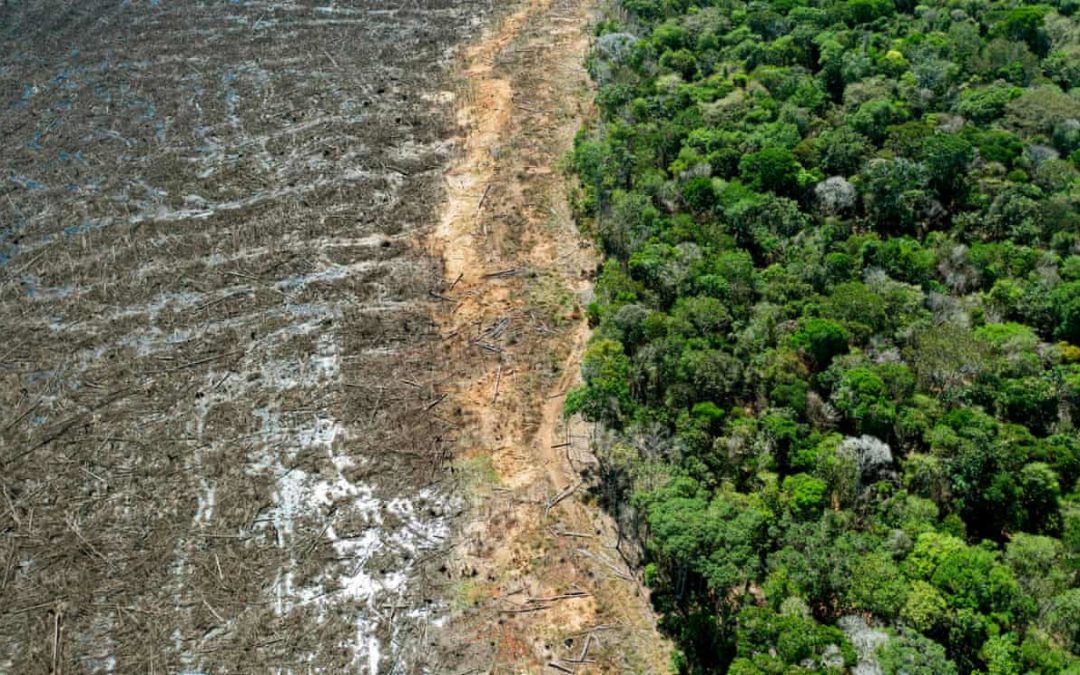
Just 3% of world’s ecosystems remain intact
SOURCE: The Guardian
DATE: April 15, 2021
SNIP: Just 3% of the world’s land remains ecologically intact with healthy populations of all its original animals and undisturbed habitat, a study suggests.
These fragments of wilderness undamaged by human activities are mainly in parts of the Amazon and Congo tropical forests, east Siberian and northern Canadian forests and tundra, and the Sahara. Invasive alien species including cats, foxes, rabbits, goats and camels have had a major impact on native species in Australia, with the study finding no intact areas left.
The researchers suggest reintroducing a small number of important species to some damaged areas, such as elephants or wolves – a move that could restore up to 20% of the world’s land to ecological intactness.
Previous analyses have identified wilderness areas based largely on satellite images and estimated that 20-40% of the Earth’s surface is little affected by humans. However, the scientists behind the new study argue that forests, savannah and tundra can appear intact from above but that, on the ground, vital species are missing. Elephants, for example, spread seeds and create important clearings in forests, while wolves can control populations of deer and elk.
The new assessment combines maps of human damage to habitat with maps showing where animals have disappeared from their original ranges or are too few in number to maintain a healthy ecosystem. Some scientists said the new analysis underestimates the intact areas, because the ranges of animals centuries ago are poorly known and the new maps do not take account of the impacts of the climate crisis, which is changing the ranges of species.
It is widely accepted that the world is in a biodiversity crisis, with many wildlife populations – from lions to insects – plunging, mainly due to the destruction of habitat for farming and building. Some scientists think a sixth mass extinction of life on Earth is beginning, with serious consequences for the food, and clean water and air that humanity depends upon.
The research, published in the journal Frontiers in Forests and Global Change, used maps of the ranges of 7,000 species in 1,500 and today from the International Union for Conservation of Nature’s Red List. Most of the data was for mammals, but it also included some birds, fish, plants, reptiles and amphibians. Many of the intact areas identified were in territories managed by indigenous communities. The analysis did not include Antarctica.
Prof Pierre Ibisch, at the Eberswalde University for Sustainable Development in Germany and not part of the study, said finding just 3% of land was intact was “predictably devastating”. He said: “We need to give nature significantly more space to carry us into the future, [but] I fear that the reintroduction of a few species in certain areas is not a gamechanger.”
Ibisch said the analysis did not take account of the climate crisis. “Accelerating climate change is becoming the overarching threat to the functionality of entire ecosystems. Yesterday’s mammal intactness hardly tells us a lot about the functioning ecosystems in the [global heating] age.”
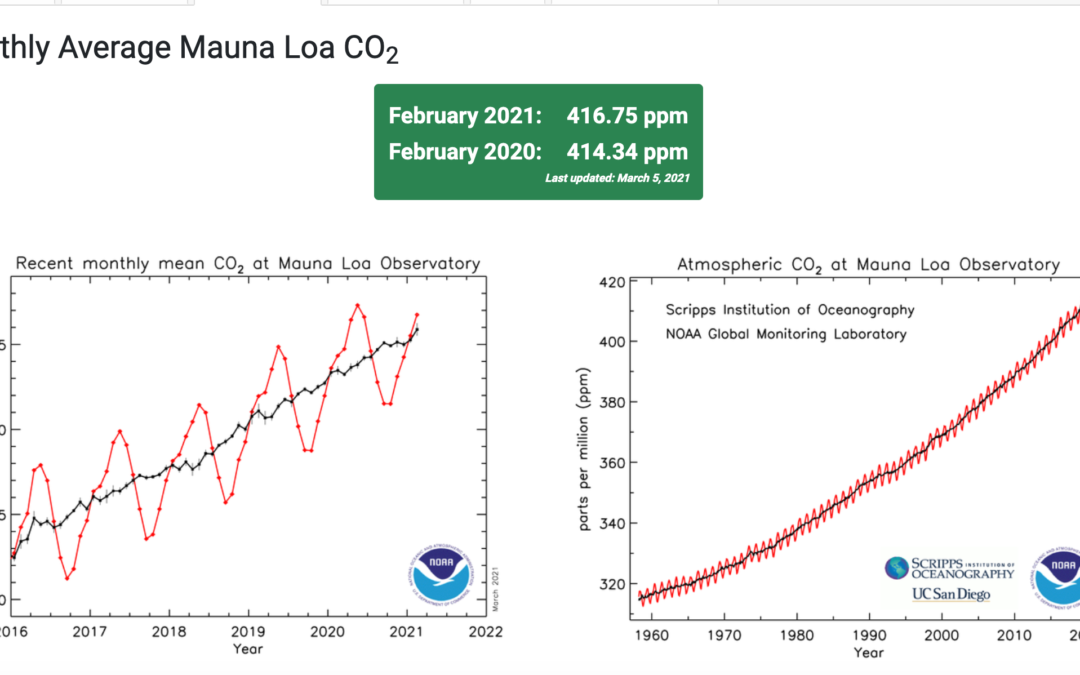
Despite pandemic shutdowns, carbon dioxide and methane surged in 2020
SOURCE: NOAA
DATE: April 7, 2021
SNIP: Levels of the two most important anthropogenic greenhouse gases, carbon dioxide and methane, continued their unrelenting rise in 2020 despite the economic slowdown caused by the coronavirus pandemic response, NOAA announced today.
The global surface average for carbon dioxide (CO2), calculated from measurements collected at NOAA’s remote sampling locations, was 412.5 parts per million (ppm) in 2020, rising by 2.6 ppm during the year. The global rate of increase was the fifth-highest in NOAA’s 63-year record, following 1987, 1998, 2015 and 2016. The annual mean at NOAA’s Mauna Loa Observatory in Hawaii was 414.4 ppm during 2020.
The economic recession was estimated to have reduced carbon emissions by about 7 percent during 2020. Without the economic slowdown, the 2020 increase would have been the highest on record, according to Pieter Tans, senior scientist at NOAA’s Global Monitoring Laboratory. Since 2000, the global CO2 average has grown by 43.5 ppm, an increase of 12 percent.
The atmospheric burden of CO2 is now comparable to where it was during the Mid-Pliocene Warm Period around 3.6 million years ago, when concentrations of carbon dioxide ranged from about 380 to 450 parts per million. During that time sea level was about 78 feet higher than today, the average temperature was 7 degrees Fahrenheit higher than in pre-industrial times, and studies indicate large forests occupied areas of the Arctic that are now tundra.
Analysis of samples from 2020 also showed a significant jump in the atmospheric burden of methane, which is far less abundant but 28 times more potent than CO2 at trapping heat over a 100-year time frame. NOAA’s preliminary analysis showed the annual increase in atmospheric methane for 2020 was 14.7 parts per billion (ppb), which is the largest annual increase recorded since systematic measurements began in 1983. The global average burden of methane for December 2020, the last month for which data has been analyzed, was 1892.3 ppb. That would represent an increase of about 119 ppb, or 6 percent, since 2000.
In early April, GML typically releases a preliminary estimate of the global annual atmospheric increase for key greenhouse gases from January 1st in one year to January 1st in the next year. This preliminary estimate is based on measurements from weekly air samples collected at about 40 sites around the world. While GML’s preliminary estimates are typically a little higher than the final calculation, which incorporates additional measurements, the 2020 increase is likely to remain one of the largest in the entire record.
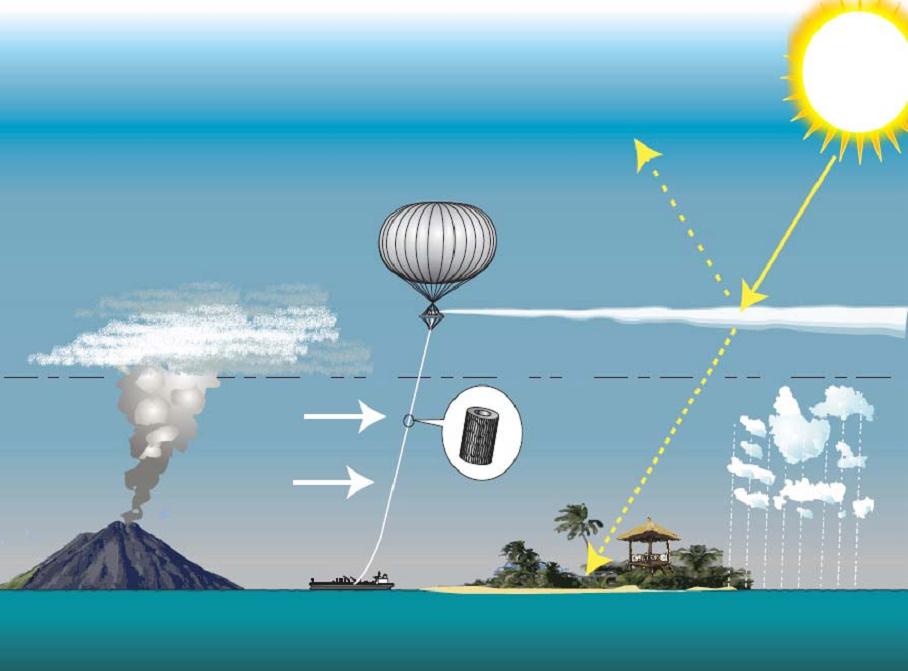
Should Solar Geoengineering Be a Tool to Slow Global Warming, or is Manipulating the Atmosphere Too Dangerous?
SOURCE: Inside Climate News
DATE: March 26, 2021
SNIP: The risks of the climate crisis are so urgent that the United States, in cooperation with other countries and under strict rules, should study the possibility of temporarily cooling the planet through solar geoengineering, a report released Thursday by the National Academies of Sciences, Engineering and Medicine says.
The report focuses on adding reflective particles to the upper atmosphere to bounce the sun’s heat back to space, brightening low-altitude clouds over the ocean to make them more reflective or thinning wispy cirrus clouds so that they trap less heat on the surface of the planet.
Supporting research into those possibilities shouldn’t be equated with actually implementing them, the NAS committee members involved with the report emphasized, adding that such studies should not detract from the need to cut greenhouse gas emissions. And scientists “need to be open to terminating” geoengineering research if findings indicate that such manipulations of the atmosphere would carry undue risk of dangerous consequences, they said.
“It’s kind of surreal to even be talking about this,” said Ambuj Sagar, who studies science and technology policy at the Indian Institute of Technology, Delhi, and was part of the committee that compiled the report. “You can’t be doing climate policy without thinking about geoengineering, and the more you get into it, the more complex it is. It raises all kinds of issues with international politics and governance.”
The Academies’ report recommends a research budget of $100 million to $200 million for the next five years, as a “minor part of the overall U.S. research portfolio related to climate change.” For now, it says, research should not be focused on a path toward deployment, but on understanding how solar geoengineering fits with all the options for responding to climate change.
Solar geoengineering only makes sense in tandem with cutting emissions, because solar geoengineering doesn’t actually address the buildup of greenhouse gases that warms the climate. It only masks some of the symptoms for as long as the measures are active. Temperatures would rebound dangerously fast when atmospheric manipulation ends. A 2015 report from the Academies concluded that geoengineering is no substitute for emissions reductions, and that none of the proposed interventions are ready for deployment.
The topic of geoengineering has surfaced with increasing frequency in recent years. A few months ago, scientists with the National Oceanic and Atmospheric Administration said their latest budget included $4 million to study what they called a “Plan B” for climate change. In 2013, NBC and others reported that U.S. intelligence agencies helped fund a previous National Academy of Sciences study assessing geoengineering risks.
Most recently, an experiment called SCoPEx, led by the Keutsch Group at Harvard and planned for June in the sky above Sweden, has been portrayed both as a crucial step toward better understanding solar geoengineering, or as a dangerous slip down a slope leading to a potential Icarus moment for humanity, with the illusion of control over nature ending in a fiery crash.
The first step of SCoPEx is to launch a balloon to test instruments that could be used to measure how reflective particles work in a small area and affect the adjacent atmosphere.
Even that small step is worrisome, said Linda Schneider, of the Heinrich Böll Foundation, a nonprofit group with ties to the German Green Party.
“What civil society currently is worried about is that the new NAS report will be used to legitimize Harvard’s SCoPEx project,” she said. “It’s notable how the first thing they highlight is the need for a massive expansion of research. We maintain that it is an untestable technology and the real impacts and consequences would only be felt once the technology would actually be deployed, and then there is no going back.”
[Ed Note: Studying geo-engineering legitimizes it and makes it a possibility in people’s minds. We all know that if it worked to reduce global temperatures, those in power and the oil companies would use it as an excuse to keep destroying the planet with industrialism and fossil fuels. The whole idea is psychotic and is a moral hazard: time spent researching geo-engineering should instead be spent figuring out a humane path for ending industrial civilization.]

One of Earth’s giant carbon sinks may have been overestimated
SOURCE: The Guardian
DATE: March 24, 2021
SNIP: The storage potential of one of the Earth’s biggest carbon sinks – soils – may have been overestimated, research shows. This could mean ecosystems on land soaking up less of humanity’s emissions than expected, and more rapid global heating.
Soils and the plants that grow in them absorb about a third of the carbon emissions that drive the climate crisis, partly limiting the impact of fossil-fuel burning. Rising carbon dioxide levels in the atmosphere can increase plant growth and, until now, it was assumed carbon storage in soils would increase too.
But the study, based on over 100 experiments, found the opposite. When plant growth increases, soil carbon does not. The finding is significant because the amount of organic carbon stored in soils is about three times that in living plants and double that in the atmosphere. Soils can also store carbon for centuries, whereas plants and trees rot quickly after they die.
It is not yet known how big the effect of lower carbon storage in soils might be on the speed of climate change, and experts cautioned that other impacts of the climate emergency such as drought would also affect how well plants and soils store carbon.
“We found that when rising CO2 increases plant growth, there is a decrease in soil carbon storage. That’s a very important conclusion,” said César Terrer, who led the research while at Stanford University in the US. He said that if soils do absorb less in future, “the speed of global warming could be higher”.
The study, published in the journal Nature, analysed more than 100 experiments from across the world in which soils, plants and trees were exposed to higher CO2 levels than in today’s atmosphere. The biomass growing in forests rose by 23% in experiments where the CO2 level used was double pre-industrial atmospheric levels. It is 50% higher today. But the forest soils did not store any more organic carbon at all.
It was thought that biomass and soil carbon would increase in tandem, as more plant biomass falls to the ground and turns into organic matter. But increased plant and tree growth requires more nutrients from the soil, which may explain the new finding, the scientists said. Extracting the extra nutrients requires the plants to increase the symbiotic microbial activity in their roots, which then releases CO2 to the atmosphere that might otherwise have remained locked in the soil.
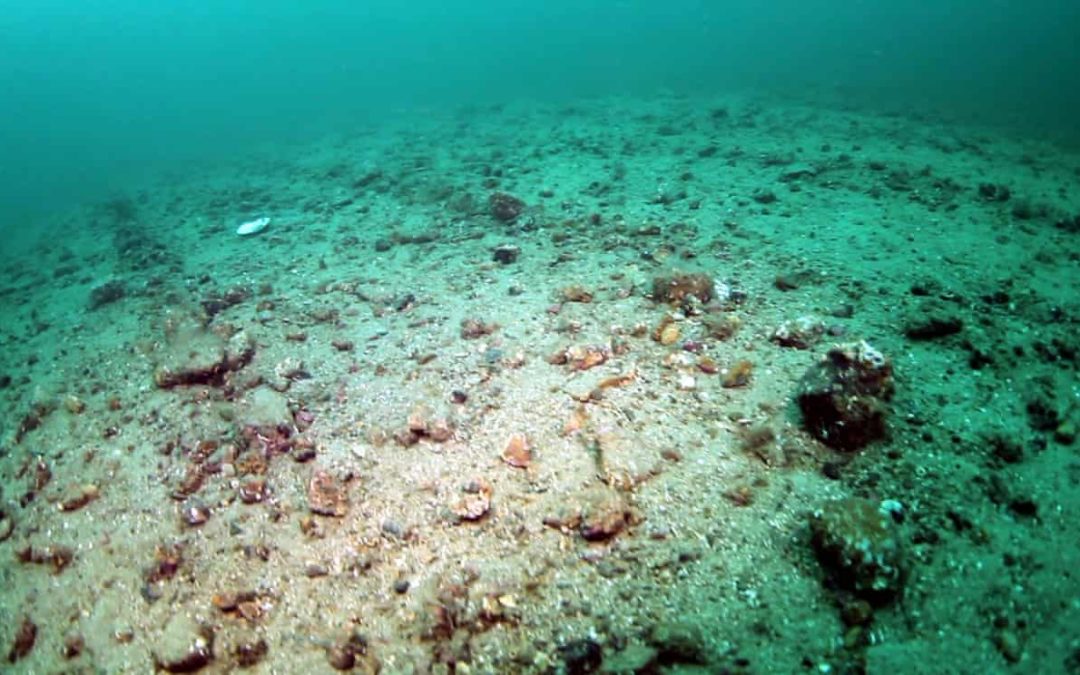
Bottom trawling releases as much carbon as air travel, landmark study finds
SOURCE: The Guardian
DATE: March 17, 2021
SNIP: Fishing boats that trawl the ocean floor release as much carbon dioxide as the entire aviation industry, according to a groundbreaking study.
Bottom trawling, a widespread practice in which heavy nets are dragged along the seabed, pumps out 1 gigaton of carbon every year, says the study written by 26 marine biologists, climate experts and economists and published in Nature on Wednesday.
The carbon is released from the seabed sediment into the water, and can increase ocean acidification, as well as adversely affecting productivity and biodiversity, the study said. Marine sediments are the largest pool of carbon storage in the world.
The report – Protecting the global ocean for biodiversity, food and climate – is the first study to show the climate impacts of trawling globally. It also provides a blueprint outlining which areas of the ocean should be protected to safeguard marine life, boost seafood production and reduce climate emissions.
Only 7% of the ocean is under some kind of protection.
The top 10 countries with the most carbon emissions from bottom trawling, and therefore the most to gain, were China, Russia, Italy, UK, Denmark, France, the Netherlands, Norway, Croatia and Spain.
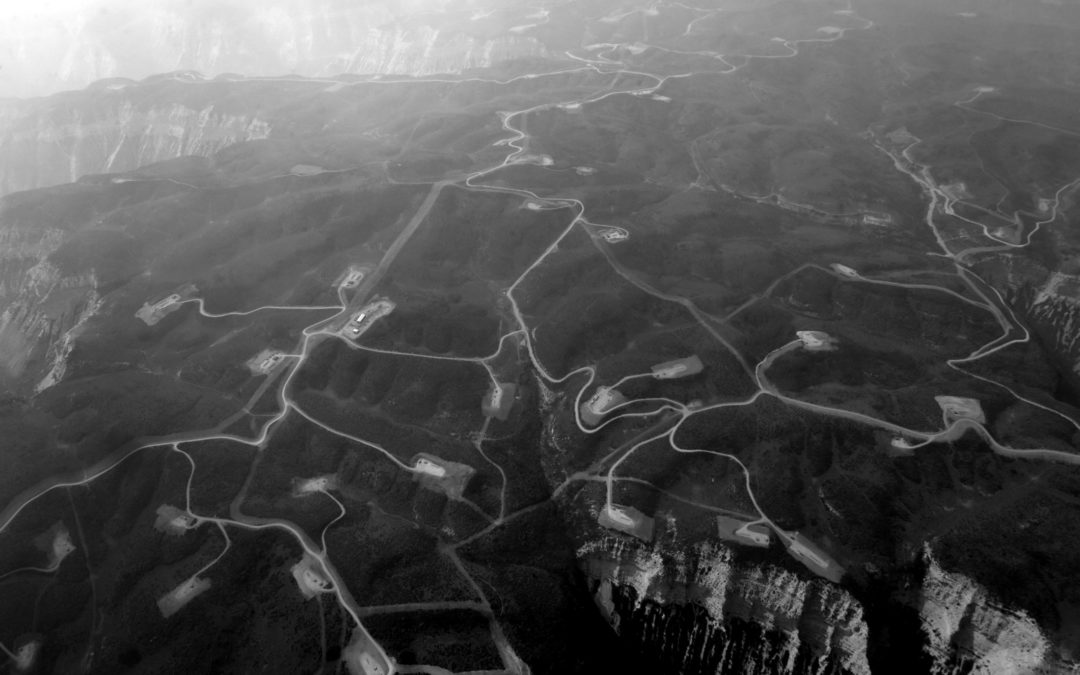
Energy companies have left Colorado with billions of dollars in oil and gas cleanup
SOURCE: High Country News
DATE: March 11, 2021
SNIP: When an oil or gas well reaches the end of its lifespan, it must be plugged. If it isn’t, the well might leak toxic chemicals into groundwater and spew methane, carbon dioxide and other pollutants into the atmosphere for years on end.
But plugging a well is no simple task: Cement must be pumped down into it to block the opening, and the tubes connecting it to tanks or pipelines must be removed, along with all the other onsite equipment. Then the top of the well has to be chopped off near the surface and plugged again, and the area around the rig must be cleaned up.
There are nearly 60,000 unplugged wells in Colorado in need of this treatment — each costing $140,000 on average, according to the Carbon Tracker, a climate think tank, in a new report that analyzes oil and gas permitting data. Plugging this many wells will cost a lot — more than $8 billion, the report found.
The first western oil well broke ground in Colorado in 1860. Drilling has been an important part of the state’s economy ever since; as of 2019, Colorado ranked in the sixth and seventh in the nation for oil and natural gas production, respectively.
When it comes to cleanup, Colorado uses a tiered system known as blanket bonding. Small operators can pay ahead with bonds on single wells. Drillers with more than 100 wells statewide pay a fixed reclamation fee of $100,000, regardless of the number of wells. A similar system also applies to wells on federal public land in the state. Large companies pay a single $150,000 bond, which covers unlimited federal public land wells throughout the country. There are about 7,400 public-land wells capable of producing oil or gas in Colorado, according to the Bureau of Land Management.
When a driller walks away or cannot pay for cleanup, the well enters the state’s Orphan Well Program, which works to identify and plug these wells. There are about 200 wells in the program right now, according to the state. But a closer look at state data reveals a large number of wells at risk.
There are also inactive wells: Nearly 10% of the state’s wells have not produced oil or gas in at least two years, according to a Carbon Tracker analysis of state permitting data. Unlike some of the neighboring oil states, Colorado requires that companies pay a single bond on each inactive well of this sort. This costs either $10,000 or $20,000, depending on the depth of the well. In theory, these payments protect the state, in case the well owner goes bankrupt. But in Colorado, it’s still far cheaper for energy companies to pay the cost of that single, unused well — and the small annual premium payments on the bond — than to actually plug it. “Colorado clearly makes it cheaper to idle a well than to clean it up,” Williams-Derry said.
In Colorado, just two companies are responsible for nearly 70% of the bonds for currently inactive wells. One is Noble Energy Inc., which was purchased by the global oil giant Chevron in October 2020. The other is Kerr-McGee, a subsidiary of Occidental Petroleum. Kerr-McGee was responsible for the 2017 home explosion in Firestone, Colorado, that killed two people. Last year, the COGCC fined the company more than $18 million for the accident, by far the largest fine in state history. Both companies still own large numbers of wells in the Denver-Julesburg Basin, the prolific oil and gas formation beneath central and eastern Colorado. And the mass desertion of wells is not hypothetical: In fall of 2019, a small company called Petroshare Corporation went bankrupt and left about 90 wells for the state to cleanup. That alone will cost Colorado millions of dollars. Last summer, when California’s largest oil driller filed for Chapter 11 bankruptcy protection, it left billions in debt and more than 17,000 unplugged wells.

Disposable plastic face masks pose huge environmental risks, with 3 million used a minute, researchers warn
SOURCE: The Independent
DATE: March 11, 2021
SNIP: The huge demand for face masks in the year since the coronavirus pandemic has swept the globe has resulted in enormous production of disposable masks, but it is now feared that undisposed of properly, they pose a major threat to the natural world.
Recent studies estimate around the world humans are now using a mind-boggling 129 billion face masks every month. Taking 31 days in a month that is an average usage of 2.8 million masks a minute being used across the planet.
Researchers now warn the huge volume of mask, with their plastic composition, pose a growing environmental threat and are urging action to prevent it from becoming the next plastic problem.
Environmental toxicologist Elvis Genbo Xu from the University of Southern Denmark and professor Zhiyong Jason Ren, an expert in civil and environmental engineering at Princeton University, said: “Disposable masks are plastic products, that cannot be readily biodegraded but may fragment into smaller plastic particles, namely micro- and nanoplastics that widespread in ecosystems.
“The enormous production of disposable masks is on a similar scale as plastic bottles, which is estimated to be 43 billion per month.”
If not disposed of for recycling, like other plastic waste, disposable masks can end up in the environment, freshwater systems, and oceans, where weathering can generate a large number of micro-sized particles (smaller than 5mm) in a matter of weeks and further fragment into nanoplastics (smaller than 1 micrometer).
The researchers stressed they do not know exactly how masks contribute to the large number of plastic particles detected in the environment – simply because no data on mask degradation in nature exists.
“But we know that, like other plastic debris, disposable masks may also accumulate and release harmful chemical and biological substances, such as bisphenol A, heavy metals, as well as pathogenic micro-organisms,” said Dr Genbo Xu.
“These may pose indirect adverse impacts on plants, animals and humans.”
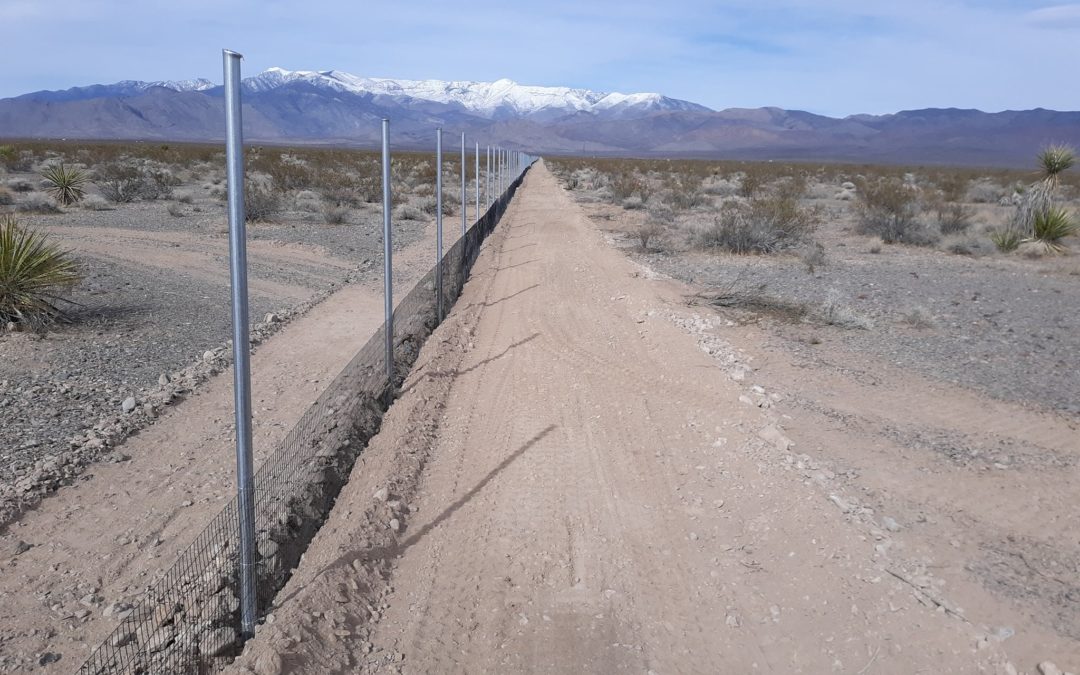
Energy Sprawl About to Explode on Nevada Wildlands
SOURCE: Desert Advocate
DATE: March 8, 2021
SNIP: Energy companies are preparing to destroy nearly 16 square miles of intact desert wildlands in southern Nevada – an area equivalent to 70% of Manhattan or 28 times the size of the UNLV campus – for two solar projects outside of Las Vegas. Companies are setting up fencing and construction markers at the Gemini Solar project northeast of Las Vegas, and at the Yellow Pine Solar site south of Pahrump; crews will finish mowing and bulldozing these lands in a matter of months.
This habitat loss will continue a trend of severe fragmentation by energy and urban sprawl that threatens the viability and resilience of numerous wildlife species across the Mojave, and compounds the pressure wildlife face from climate change. Southern Nevada has already lost nearly 20 square miles to utility-scale solar development. The Gemini and Yellow Pine solar projects are the latest, but not the last massive projects proposed on public lands here. The proposed Battle Born Solar project would carve up another 14 square miles of habitat northeast of Las Vegas, if approved. Energy companies have submitted proposals for several other projects in the region in response to the states renewable portfolio standard. Throw in plans for expanded lithium mining to feed our battery storage demand, and the toll on Nevada wildlands grows further.
This is not the first time a renewable energy rush has threatened ecosystems in the southwest, but Nevada has resisted policy solutions that are known to reduce pressures on wildlands. A lack of of science-based land management planning, as well as a state capital that is allergic to distributed generation policies has allowed utility companies and energy project developers to select sites with little concern for impacts on wildlife. The Gemini Solar project, for example, is expected to destroy 25% of the remaining habitat of the imperiled threecorner milkvetch on public lands. The Gemini project will also mow down land previously identified by the Fish and Wildlife Service as a priority habitat linkage for the desert tortoise; biologists have been sounding the alarm that the tortoise population continues to spiral downward as a result of multiple factors, to include habitat loss.
Despite this astonishingly fast pace of habitat destruction for energy sprawl, there is very little overt pressure on Federal and State-level authorities to address the issue. A review of press releases over the past two years from national environmental organizations active in Nevada reveals no mention of the Yellow Pine or Gemini Solar projects.
